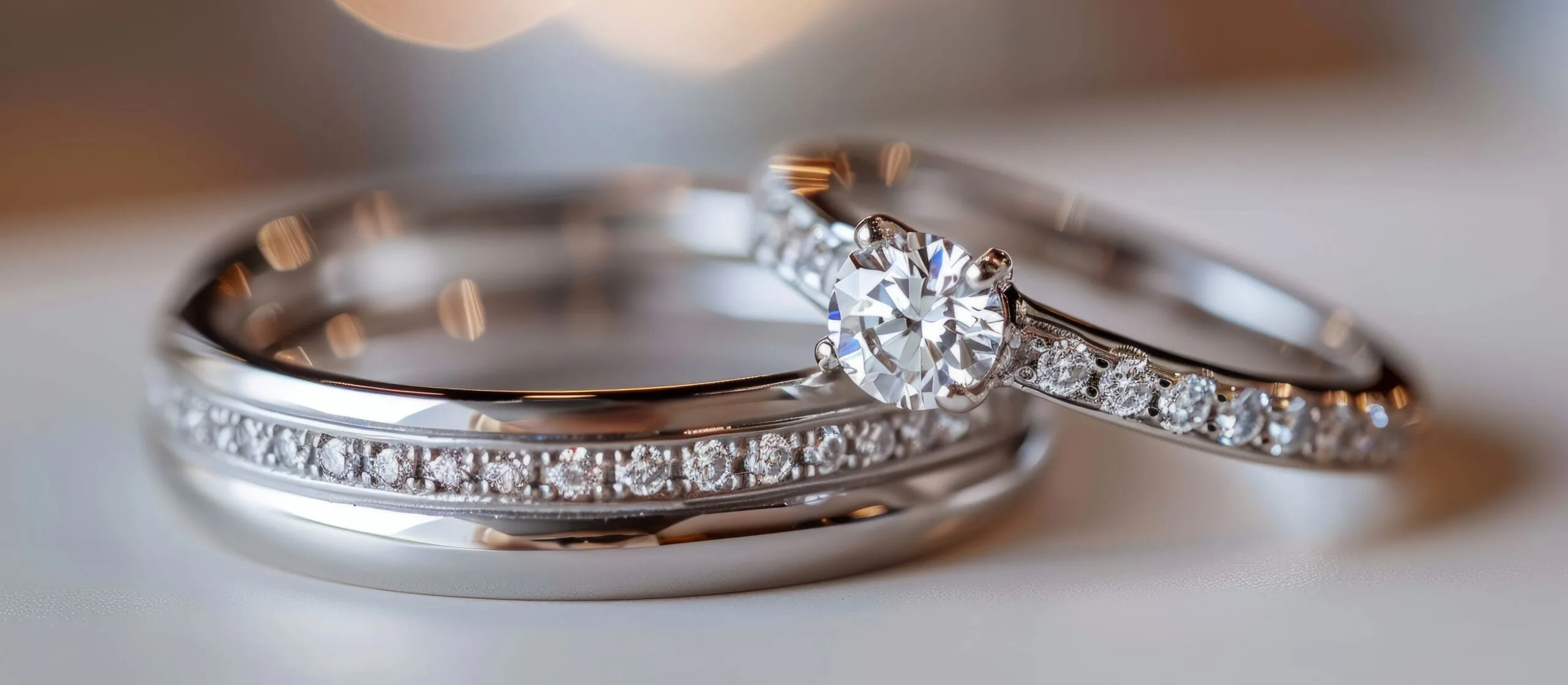The beloved silvery-white precious metal known as platinum is one of the rarest metals on earth, and the most expensive metal in the jewelry industry (yep, even more expensive than gold). From engagement rings and wedding bands to earrings, chains and watches, platinum is prized by jewelers for its rarity, durability and hypoallergenic properties. This begs the question – is platinum jewelry better than gold jewelry? Let’s explore all that platinum has to offer.
The Rise of Platinum Jewelry
Although the use of platinum can be traced as far back as 700 BCE, it wasn’t a popular material for jewelry-making until the 19th century. Platinum has an extremely high melting point (3,215 degrees Fahrenheit), so refining it was quite difficult for centuries.
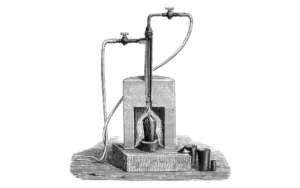
In the 18th century, a Swedish chemist named Henrik Scheffer figured out how to melt platinum with arsenic, but this method never gained much momentum because it was pretty dangerous. Silver was still the predominant white metal in the jewelry industry. But later on in the mid-1800s, the invention of the oxyhydrogen torch made it possible to melt platinum safely, and the metal started gaining popularity.
On top of that, new discoveries of platinum ore brought platinum into the spotlight. Platinum jewelry became all the rage among the elite, and the demand particularly surged during the Art Deco period (1919-1939). Step aside, silver, there’s a new metal in town!
Platinum’s Superior Purity and Durability
Platinum jewelry is typically an alloy of 95-98% pure platinum (often marked as “950 Pt”) with other platinum group metals like ruthenium or iridium. One of the most dense and durable metals used in jewelry, platinum is an ideal choice for pieces that are worn daily, like engagement rings and wedding bands. Platinum is also great for custom pieces because it’s very malleable and can be easily shaped into intricate designs.
Metalsmiths often alloy softer metals like silver and gold with other metals to increase strength and durability for jewelry. But when it comes to platinum jewelry, the purer the better. Platinum’s natural strength and density mean that a high purity level actually enhances durability.
Platinum Jewelry is Hypoallergenic
Another major advantage of platinum jewelry is that it’s hypoallergenic. Both the high purity level of platinum jewelry and the inherent traits of the metal contribute to a very low risk of allergic reactions. Platinum is an exceptionally stable metal. In fact, it’s the least reactive metal known to man! Highly resistant to tarnishing, platinum will not react with sweat, body oil or cosmetics. This chemical stability reduces the likelihood of irritation, which is perfect for people with sensitive skin.
The Platinum Patina
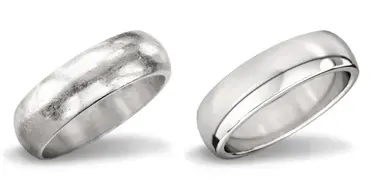
Photo from With Clarity.
Platinum jewelry is super low maintenance and will sustain its beautiful silvery-white color for a lifetime. However, over time the surface of a platinum ring (or any type of jewelry) will develop a change in the finish and texture, a soft matte layer called a patina. A patina is a natural reaction to daily wear, and it’s often described as a slightly frosted finish or loss of luster.
Some people actually prefer the aesthetic of a patina, as it can create a cool antique look. In Japan, for example, platinum patina is treasured and thought to symbolize wisdom and perseverance. And fortunately for those who don’t prefer a patina layer, it’s not permanent. Jewelry made of platinum can always be polished to remove the patina and restore its original shine!
Platinum Rings
Platinum rings are known for their superior ability to provide a strong, secure setting to hold gemstones in place, referred to in the jewelry industry as “holding power.” And aside from keeping expensive precious stones secure, many people choose platinum rings for the color. Platinum’s white color does not alter the perceived hue of diamonds like some gold alloys might. Diamonds set in yellow or rose gold rings, for example, can reflect some of the gold’s color. This slightly changes the diamond’s appearance, which can be seen as a downside.
Many people also prefer the density and heavy weight of platinum rings. A platinum ring will feel much heavier than a gold ring of the same exact size. Platinum is very dense – so dense that a six-inch cube of it would weight about 165 pounds!
Platinum Chains
While gold chains have long been popular in the jewelry world, platinum chains are favored by many for their heavier, more substantial feel. Some people also see platinum chains as a good long-term investment and store of wealth. Some of the most popular designs include cable chains, curb chains and Figaro chains.
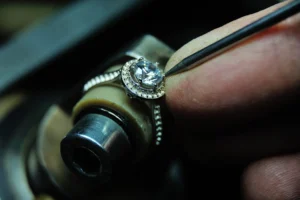
Platinum vs Gold Jewelry
As we touched on earlier, platinum jewelry is more pure than gold jewelry. Platinum jewelry is typically 95-98% pure, while most gold jewelry ranges from 10k to 22k – 41.7% to 91.6% pure.
Because gold is so soft, pure gold jewelry isn’t the most sensible product. It’s generally agreed that 14k and 18k are the most practical options for gold jewelry. Although 24k (pure) gold jewelry does exist, you wouldn’t want to wear it while doing work around the house or anything too active, because it can be easily scratched and bent.
One of platinum’s most interesting traits is how it responds to impact, especially compared to gold. When gold is scratched, the finish wears away, whereas when platinum is scratched, the metal just shifts over from one area to another, creating an uneven surface. And amazingly enough, displaced platinum can simply be moved back into place with a good polish.
Is Platinum More Expensive Than Gold?
When it comes to precious metal value, gold is more expensive than platinum. The current spot price of gold is more than double that of platinum. Right now, as of May 2024, gold is valued at $2,381 per troy ounce, while platinum is priced at $1,048 per troy ounce.
Gold holds a monetary premium, an additional value beyond its intrinsic value as a metal. This is due to gold’s role and recognition as money. Central banks and individuals buy and hold gold for investment purposes. Gold is seen as a hedge against inflation and stable store of wealth amidst times of economic uncertainty, which is why it’s used as a universal form of currency and a portfolio diversifier.
Platinum, on the other hand, is not generally used as an investment in the way that gold is. There is a market for buying and trading platinum bullion, but it’s much less significant in scale than gold’s bullion and investment market. Platinum is primarily used in practical applications like jewelry, medical devices, dental restorations, electronics, the automotive industry and more.
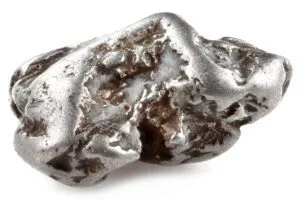
Platinum Outranks Gold in the Jewelry Industry
On the flip side, platinum is more expensive than gold in the jewelry industry for several reasons. First of all, platinum is a very rare material. So rare in fact, that all of the platinum ever produced would only cover your ankles in an Olympic-sized swimming pool. On the other hand, all of the gold ever produced would fill three Olympic-sized pools!
Density is another contributing factor. Because platinum is much denser than gold, jewelers need more platinum to make a piece of platinum jewelry than they would need for a gold equivalent.
Platinum is also more difficult for jewelers to work with, due to its higher melting point and the special equipment required.
Last but not least, the process of extracting and refining platinum is also more involved and expensive compared to gold. Platinum is generally found deeper within the earth’s crust and often mixed with other metals, making extraction more complex, labor-intensive and time-consuming.
Where to Sell Platinum
All in all, platinum is an extremely valuable metal, and it’s useful in a myriad of ways beyond fine jewelry. Luckily platinum can be infinitely recycled and repurposed, which is exactly what we do here at Garfield Refining. If you have platinum or other precious metals that you no longer want and are looking to sell, we’ve got you covered!
With over a century of experience refining precious metals, Garfield has perfected the art of recovering maximum yields, which results in the highest payouts for our clients. With award-winning customer service and a seamless transaction process, Garfield provides maximum value for your precious metals and the best experience possible!
Looking to sell your platinum or other precious metals? Garfield Refining offers the highest payouts for precious metals, and the process couldn’t be easier. Download a free label to start your shipment today!

